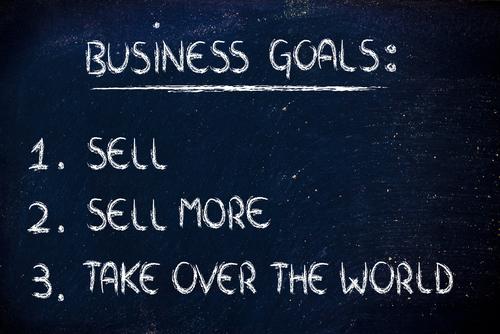Utilize Social Media First
Long before meetings occur with C-level decision makers, you must find a way to get your foot in the door. You may have heard that cold calling is dead. It is true: Nobody likes to receive a 100 percent cold call. Gatekeepers have been highly trained to recognize a cold call, and to never put a cold-calling salesperson through to a live body. So, how do you avoid making cold calls, and circumvent the receptionist? Forward-thinking sales professionals and organizations have figured out more strategic prospecting methods. If you haven’t already, consider leveraging social media to tap into large professional networks to find key decision makers and make warm calls. Click here to find B2B sales positions. The conversation to selling technology typically starts with IT. Find your target company’s IT staff members on Twitter or other social networks. Engage them by interacting on their posts, sending them value-based information not just of your products, but other industry news that they may find valuable. Once you have established a relationship with their IT staff via social media and demonstrated your expertise, ask for a meeting.Be a Trusted Consultant
A consultative approach is the only way to sell technology. Dumping a blanket solution on your client is a great way to not get a second meeting. Prior to the first meeting, spend time researching the company you are meeting with. During the initial meeting, use open-ended questions to learn about their business. Before selling a client on an ROI model for your product or service, you must become an expert in their business so that you fully understand their pain points and the areas they would like to make improvements in. Only then you can make value-based recommendations that will provide specific benefits to each client’s unique business needs.Strategically Sell the CFO
If you make it past the first meeting, it is likely that the CFO will be included in subsequent discussions and will be a key player in the decision process. Gaining CFO support can be the most challenging portion of the sales cycle. After all, CFO’s are paid to uncover risk and potential challenges that will prevent an ROI from ever being realized. Creating business-impacting value propositions that are cost-effective will improve your success with this critical decision maker. In order to do so, your presentation must be backed by detailed financial data with quantifiable benefits that include a well-supported analysis. It also helps to include a case study or two of how your product or service has benefited a similar company.Ease Their Mind Regarding the Transition
Every company has made bad decisions regarding technology where either it did not work the way it was intended to, the implementation went horribly wrong, or it ended up costing more money than initial projections, causing the ROI model to turn upside down. Fear regarding the transition period is one of the biggest objections you will get when selling technology solutions. Find out what their fears are and what has gone wrong in the past, early on in the sales cycle. Then, it is your job to ease their mind regarding the transition to your product or service. You must convince them that your solution will be implemented in the smoothest and fastest possible manor, causing minimal disruption. In order to effectively demonstrate this, you must present your change-management strategy in a compelling way. Provide specific details on how the transition will go, and make sure the expectations are clear. If possible, get letters of recommendations from past clients that will speak highly of the smooth transition you provided for their company. You can tell them how great your implementation process is until you are blue in the face. However, third-party data regarding this experience is far more impactful. Selling technology in B2B is not an easy endeavor. There are competing companies, technologies, sales professionals, market changes, and many other barriers you will face. Coming up with a strategic approach will make life much easier. Are there any techniques or tips for selling technology that you have used to increase your success rate? I’d love to hear from you. Please comment below. John White is a dad, MBA candidate, sales and marketing expert, B2B technology and communications consultant, and blogger.Upload Your ResumeEmployers want candidates like you. Upload your resume. Show them you're awesome.
Related Articles
- Turbocharge Your Time Management With These Tips
- B2B Startups Lack Glamour, But Win Funding
- 7 Tips to Landing the Right Venture Deal


